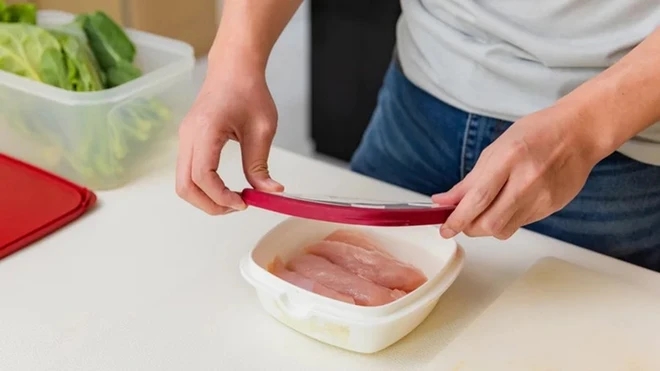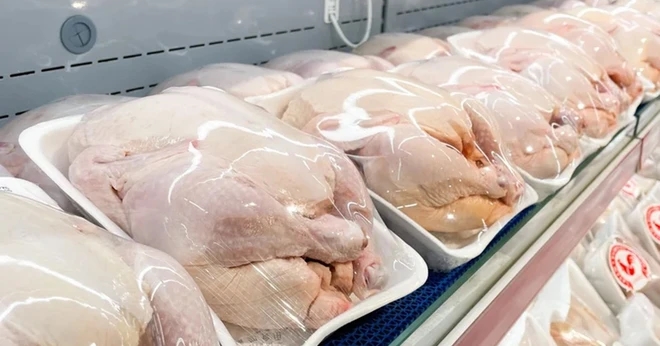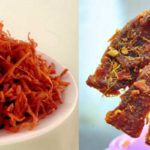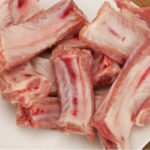How to Spot Spoiled Raw and Cooked Chicken
Knowing how to spot the signs of spoiled raw or cooked chicken can help you avoid an unpleasant dining experience. (Photo: ITN)
How long chicken lasts in the fridge is something that not everyone knows.
Check the color
The appearance of raw chicken is one of the easiest ways to establish if it is still good to use. Fresh raw chicken will typically have a light pink or pinkish-white color and may sometimes appear slightly darker if it has been exposed to air but should not be overly dark. Meat that is green or has turned gray is a clear sign that it has gone bad, and it should be discarded immediately if this is the case based on its appearance. Cooked chicken can range in color from white to a light brown color but watch out for mold growth, especially if it has been in the refrigerator for more than three days. Any unnatural discoloration or patches on the meat are signs of possible bacteria growth which could cause salmonella or food poisoning. Additionally, watch out for cooked chicken that appears slimy or overly wet. It is best to discard the spoiled chicken. Safely cooked chicken that has been stored in the refrigerator still has a firm texture, and its color is white and supple.
Smell the meat

Notice the flavor when you take a bite of leftover chicken from the refrigerator. (Photo: ITN)
A strong, unpleasant smell is an indicator that the chicken has gone bad. However, a slight meaty smell is normal for store-bought chicken, while spoiled chicken may smell like sulfur, dirty socks, or ammonia. If the smell is overpowering, it is probably time to toss it. The same goes for cooked chicken, an off smell is the ultimate sign that it is no longer good to eat. A study in the journal Poultry Science found that bacteria create these offensive odors and are a good indication that the chicken is not fit to eat. A simple sniff test can tell you a lot and can help you avoid making bad choices in the kitchen.
Discard any meat with a slimy coating
A thin, wet coating is normal on raw chicken when you first remove it from its packaging, but if it has a slimy texture after you have patted it dry or seasoned it, the meat may have spoiled. Raw chicken should be firm and moist, not sticky or wet. Knowing the difference can help you and your family avoid consuming potentially hazardous food. For cooked chicken, the slime indicates significant bacteria growth, so it is best to get rid of it. Leftover chicken that is overly slimy or mushy not only leaves an unpleasant taste in your mouth but also exposes you to harmful germs.
Off flavors

Notice the flavors when you take a bite of leftover chicken from the refrigerator. If the meat tastes sour, metallic, or overly bitter, it is best to throw it in the trash. The safest approach in this situation is to analyze the taste before swallowing. If there is an off taste in your mouth (it may also be extremely soft or slimy), spit it out immediately.
Damaged or compromised packaging at the store
You should always examine all food packaging thoroughly, but pay special attention to any loose or damaged plastic wrap covering raw chicken. If you notice any tears, punctures, or openings, avoid purchasing it and notify the store. Even if the chicken is still within its “use-by” dating, signs of inadequate packaging increase the likelihood of pathogen contamination. Store-related issues are not limited to broken seals and tears in the packaging; also, check for any bloating in the packaging. This increased air could indicate bacterial growth, making the meat unsafe. If frozen chicken at the grocery store looks like it might have been thawed and refrozen, it’s best to pass. This process increases the chances for germs to grow while diminishing both flavor and texture.
Source: Education and the Times
Recognizing Chemically Dyed Dried Beef: A Guide
Consumers should be aware of the potential dangers of consuming certain types of dried beef, such as those dyed with artificial coloring and treated with chemicals, as it has been associated with numerous cases of food poisoning. Knowing how to differentiate between genuine and fake dried beef can help to avoid such risks.






































